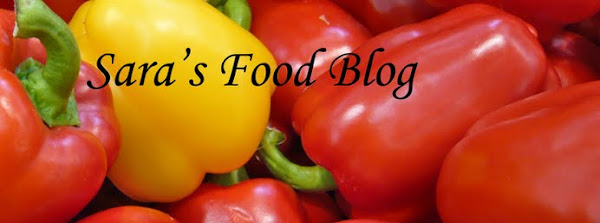
I have been, for awhile now, telling people (sometimes complete strangers) about how terrible Aspartame and Splenda (Sucralose) are for you. So for this, my first real post, I want to talk about sugar, artificial sweeteners, high-fructose corn syrup and healthier sweetener options.
First off, the bad.
High-Fructose Corn Syrup (HFCS):It comes from sugar derived from corn. Other sugars made from corn are: syrup, fructose, dextrose, dextrine, and HFCS. Why is it bad? All fructose must be metabolized through the liver, unlike glucose which is metabolized in every cell of the body. So if it is metabolized through the liver what are you doing to yourself when you have a rum and coke?
Also,
studies show that the consumption of fructose interferes with the body's ability to absorb copper. Copper is integral for vital organs but also collagen and elastin, which most of us know as the stuff in our skin that keeps us young looking. Copper deficiency can also lead to: weak bones, infertility, heart issues, among others.
HFCS not only contains no nutritional value, but also leaches micro-nutrient stores from our body. HCFC has been identified as an inhibitor of white blood cells activity, making these "defense cells" incapable of protecting the body from foreign invaders and illness.
A researcher at UC Davis, Peter J. Havel, D.V.M., Ph.D., "We found that consuming fructose-sweetened beverages with a meal resulted in a decrease secretion of insulin and a decreased production of Leptin. Both hormones regulate appetite and body weight."
Research shows that items with HFCS in them contain detectable levels of mercury, and most of these products are marketed to children.
Splenda (aka. Sucralose):What is it? It is table sugar that has had the molecular structure changed to replace three hydrogen molecules with two chlorine atoms. Ok ok ok, too much science, I know, but just think about it... replacing hydrogen with chlorine, can this be good? Sure chlorine is naturally occuring in the body, but should we be adding more, especially if one is diabetic?
First off the diabetics. All the science talk aside, using sucralose throughout the day can push a diabetic person to lose control of their blood sugar, because of a specific blood-marker disturbance. And if that seems too vague, the simple reality of Splenda is that it is only 1% sucralose and the rest is
sugar! See more
here.
The following list are side effects of sucralose by Dr. Mercola: redness of skin, burning sensation on skin, rash, itching, panicky/shaky feeling, swelling, skin blisters, welts, nausea, cramps, dry heaves, becoming withdrawn, loss of interest in regular life activities, forgetfullness, moodiness, crying for no reason, acne, anxiety, feelings of food-poisoning, headache, blurred vision, mental/emotional breakdown, bloated abdomen, dirrhea, trouble staying focused, feeling depressed, vomiting, seizures, faintness. Wow. That is a lot of potential problems for a few less calories.
Aspartame: Well known, long existing in many edible products. Also known as Equal and NutraSweet.
In lab rats, aspartame was chemically altered when ingested and became formaldehyde. And most of the human tests have been only a few people over a short time, and those people were of healthy age. To be clear, they were not elderly or children; the effects of this additive have not been studied in these vulnerable populations.
Aspartame has been shown to be a neurotoxin, meaning it changes brain chemicals. (That one you can google and read about for months)
Healthy Alternatives to chemicals: Amazake
Barley Malt
Brown Rice Syrup
Date Sugar
Fruit (dried, soaked)
Fruit Juice Concentrate
Honey
Maple Syrup
Molasses (blackstrap or sorghum)
Organic Cane Sugar (sucanat or rapadura)
Palm Sugar
Stevia
What I think:NEVER use a chemical to sweeten anything. If you think back a few decades, or even back to cave man times, there were less incidences of the diseases we have today. Sure modern medicine has helped us live longer, but if our bodies are inundated with chemicals is it a better life?
If you can break the sugar habit, you will find that an apple is sweeter and those crazy chocolate cravings subside.
If you still need to sweeten, use something from the list above.
Be aware, think for yourself, and honor your body.
 Back to the point, turkeys.
Back to the point, turkeys.

